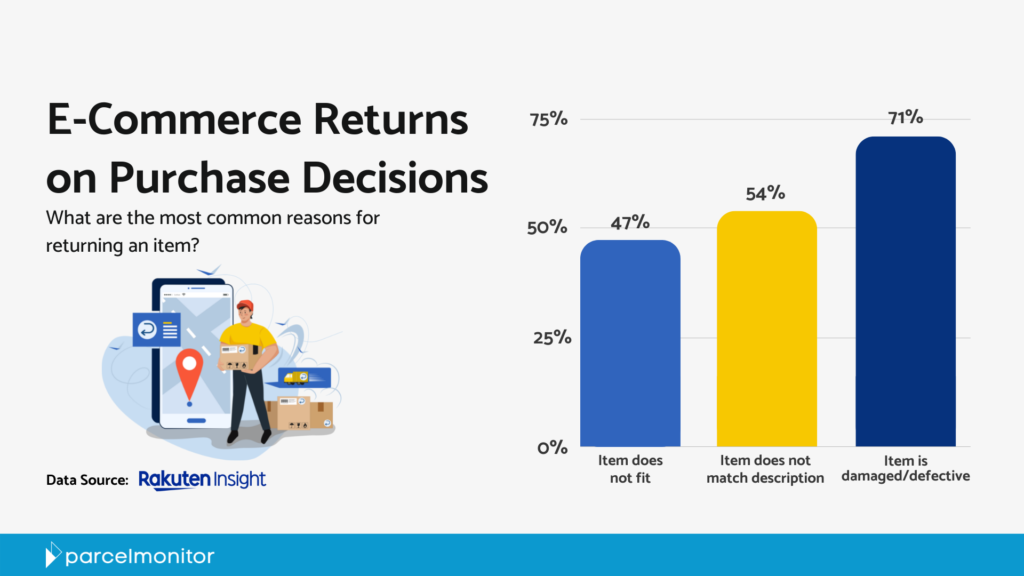There is no denying that e-commerce returns are a necessary evil in the retail industry today. While they may potentially result in inconvenient hidden costs and adversely impact product margins, they can also serve as an effective way for retailers to demonstrate their commitment to exceptional customer service and hence boost customer loyalty.
Online e-commerce community platform Parcel Monitor has teamed up with market research specialist Rakuten Insight Global to dig deeper into consumer preferences for e-commerce returns, including what causes customers to return their purchases, factors constituting an “ideal” return policy, and others.
#1: The three major reasons for returns include damaged items, ill-fitting items, and items that do not match the product description
Based on our findings, the majority of e-commerce returns are due to damaged or defective items, which account for 71% of all returns. Other commonly cited reasons include the mismatch between items and their product descriptions (54%) and ill-fitting items (47%). Having an understanding of these causes may help retailers design comprehensive policies to keep track of returns, while simultaneously lowering the likelihood of friendly fraud chargebacks. In addition, they may also reveal possible improvement areas for businesses, which will in turn help to enhance customer loyalty and retention in the long run.
#2: 71% of customers want free shipping for e-commerce returns
Although retailers are not compelled by law to establish a return and refund policy, having one has many benefits, such as avoiding fraudulent returns and encouraging customers to trust a specific brand.
Most consumers seem to expect “free shipping” to be included in a return policy. Rakuten Insights reported that as long as free returns were provided, 52% of surveyed respondents would be inclined to purchase more, and 33% would repurchase. Meanwhile, 53% of the same group desired cash refunds, 31% expected status updates for their returns via SMS or e-mail, and another 30% wanted a return pick-up service.
#3: Returnless refunds are the most popular mode of e-commerce returns
When asked about the mode of their returns, 80% of participants said they would like to “get a refund without having to return the item.” In response to the same question, 59% said they would prefer returning to a designated drop-off location,” whereas 45% said they would rather “return in-store”.
Returnless refunds, despite popular assumptions, can bring about many advantages to both consumers and sellers. Besides avoiding the prolonged returns process, returnless refunds also offer a quicker turnaround to address product issues, which would then increase customer satisfaction down the road. As the cost of shipping the merchandise back to the warehouse often outweighs the profit gained from reselling it, retailers might just be saving money by eliminating the need for returns.
To read the full article from Parcel Monitor, click here.


